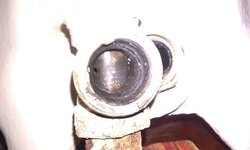OK, not sure where to post this, but since my boiler is gas-fired, I figured I'd stick it here. I have an old school (ca 1915) cast iron radiator system in my house. Last year I installed a wood stove, and to my surprise, it damn near heats the entire house. But not quite. My wife will NOT mess with it, and she works from home. So we need a bit of supplemental heat, mostly for her office and the baby's room upstairs. The problem is that when you turn on the thermostat, the whole system cranks up, which a) takes forever, and b) lasts forever. Great for long, even heat, but not what I need now. All of the radiators have valves on them in various states of repair. Ideally, I'd like to shut down the water supply to most of the radiators so that just select rooms would be heated. I tried to clean/fix a few of the valves last year. However, the valves have a pinhole in them that allows water to flow even when turned off. It seems that the radiators get just as hot when the valves are closed. I don't understand their purpose, since the radiators are in parallel. I don't see any reason for any water flow when the valve is closed. Does anyone have any thoughts on this, or how to modify the valves so that I can turn them off completely?
Shutting off radiators?
- Thread starter nola mike
- Start date
-
Active since 1995, Hearth.com is THE place on the internet for free information and advice about wood stoves, pellet stoves and other energy saving equipment.
We strive to provide opinions, articles, discussions and history related to Hearth Products and in a more general sense, energy issues.
We promote the EFFICIENT, RESPONSIBLE, CLEAN and SAFE use of all fuels, whether renewable or fossil.


